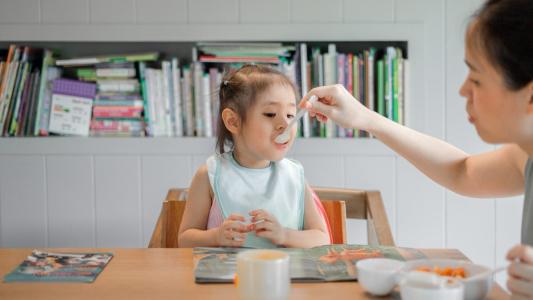Excerpted from GOOD INSIDE: A Guide to Becoming the Parent You Want to Be by Becky Kennedy. Copyright © 2022 by Dr. Becky Kennedy. Published by Harper Wave, an imprint of HarperCollins Publishers. Used with permission. All rights reserved.
“My kids should be happier than they are,” a mother tells me. “They have everything they could ever need and still, all this small stuff bothers them.”
“My daughter worries so much about such big things — homelessness, death, inequity around her . . . and she’s only seven!” a father says in my office. “I always tell her, ‘Stop worrying! Let’s think about all the good things in your life!’ but still, she’s up at night, unable to fall asleep.”
“I was a pretty lonely, depressed child,” a mother admits to me. “I want to be a different parent to my kids than my parents were for me. My partner gets annoyed with me, because he says I’m always rescuing our kids and making their lives too easy. Is that so bad? Don’t you want your kids to be happy, Dr. Becky?”
Do I want my kids to be happy? Sure! Of course! And yet, I don’t think happiness is what these parents are really talking about. I think there’s something much deeper going on. Consider this: What actually leads to happiness? Does eradicating our kids’ worry and loneliness and ensuring they feel good at all times enable them to cultivate happiness on their own? What do we really mean when we say, “I just want my kids to be happy”? What are we talking about when we say, “Cheer up!” or “You have so much to be happy about!” or “Why can’t you just be happy?” I, for one, don’t think we’re talking about cultivating happiness as much as we’re talking about avoiding fear and distress. Because when we focus on happiness, we ignore all the other emotions that will inevitably come up throughout our kids’ lives, which means we aren’t teaching them how to cope with those emotions. And, again, how we teach our kids—through our interactions with them — to relate to pain or hardship will impact how they think about themselves and their troubles for decades to come.
I don’t know a single parent who doesn’t want the best for their kids. Count me in: I want the best for my kids! And yet, I’m not sure that “the best” for them is to “just be happy.” For me, happiness is much less compelling than resilience. After all, cultivating happiness is dependent on regulating distress. We have to feel safe before we can feel happy. Why do we have to learn to regulate the tough stuff first? Why can’t happiness just “win” and “beat” all other emotions? That certainly would be easier! Unfortunately, in parenting, just like in life, the things that matter most take hard work and time; helping your child build resilience certainly isn’t easy, but I promise it’s worth it.
Picture your body as a large jar. Floating around are all the different emotions you could possibly feel. For simplicity’s sake, let’s say there are two major categories of emotions: ones that feel upsetting and ones that feel “happier.” In our emotion jar, we have every single feeling under the sun. The size of each emotion — and therefore the space it takes up in the jar at any given moment — is constantly changing. Now, remember: our bodies have an innate alarm system and are constantly scanning for danger before anything else. When we aren’t able to cope with emotions like disappointment, frustration, envy, and sadness — when they take up all the space in the emotion jar — our bodies initiate a stress response.
And it’s not just the difficult feelings themselves that prompt our bodies to feel unsafe. We also feel distress over having distress, or experience fear of fear. In other words (assuming there’s no actual physical threat, but simply the “threat” of uncomfortable, overwhelming emotions), as we start thinking, “Ah! I need to make this feeling go away right now,” the distress grows and grows, not as a reaction to the original experience, but because we believe these negative emotions are wrong, bad, scary, or too much. Ultimately, this is how anxiety takes hold within a person. Anxiety is the intolerance of discomfort. It’s the experience of not wanting to be in your body, the idea that you should be feeling differently in that specific moment. And this isn’t a product of “being a downer” or “seeing the glass as half-empty”; it’s a product of evolution. Our bodies will not allow us to “relax” if we believe the feelings inside us are overpowering and frightening. So, where’s the happiness here? Well, it’s crowded out. It cannot surface.
Of course, it doesn’t have to be this way. The wider the range of feelings we can regulate—if we can manage the frustration, disappointment, envy, and sadness — the more space we have to cultivate happiness. Regulating our emotions essentially develops a cushion around those feelings, softening them and preventing them from consuming the entire jar. Regulation first, happiness second. And this translates into our parenting: the wider the range of feelings we can name and tolerate in our kids (again, this doesn’t mean behaviors), the wider the range of feelings they will be able to manage safely, affording them an increased ability to feel at home with themselves.
Do I want my kids to experience happiness? Without a doubt, yes. I want them to feel happiness as kids and as adults; this is why I’m so focused on building resilience. Resilience, in many ways, is our ability to experience a wide range of emotions and still feel like ourselves. Resilience helps us bounce back from the stress, failure, mistakes, and adversity in our lives. Resilience allows for the emergence of happiness.
Developing resilience doesn’t mean we become immune to stress or struggle — these are, of course, unavoidable facts of life — but our resilience determines how we relate to those difficult moments as well as how we experience them. People who are resilient are better able to cope when stressful moments arise. Here’s a helpful (though slightly oversimplified) equation: stress + coping = internal experience. The good news? Resilience is not a static character trait that children possess or lack; it’s a skill that can be cultivated, and one that, hopefully, parents help instill in their kids from a young age. Because we can’t always change the stressors around us, but we can always work on our ability to access resilience.
This article was reprinted with permission of Big Think, where it was originally published.






